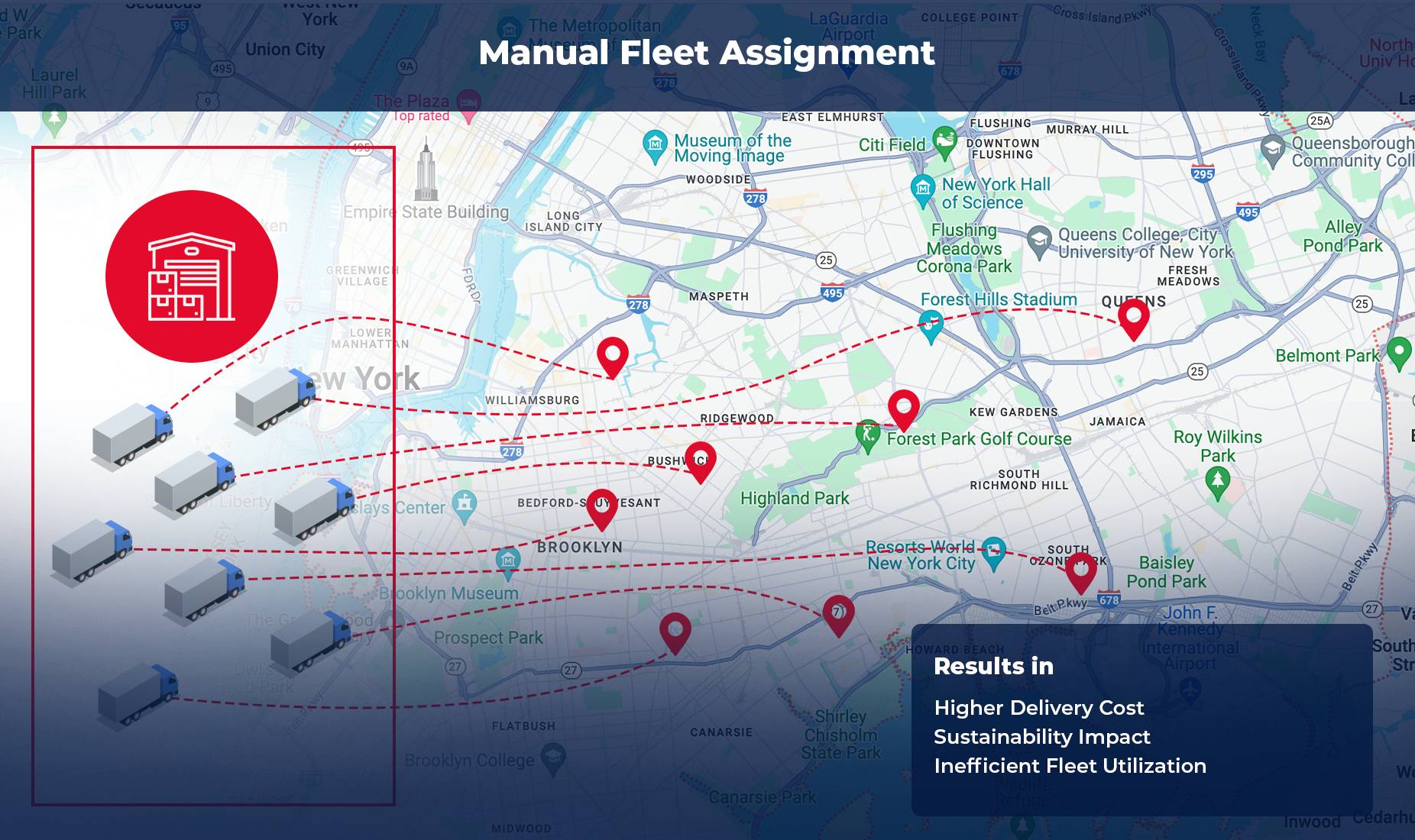
How can delivery routing software help your business maximize fleet capacity?
In the dynamic landscape of logistics, every business strives for efficiency, seeking to optimize its fleet capacity while minimizing costs. Imagine a scenario where each delivery is meticulously planned, every route is optimized, and resources are utilized to their fullest potential. The ideal dream of every dispatcher but can this made into reality? This is where delivery routing software steps in as a powerful ally. This delivery software solution has been transforming the way businesses manage their fleets and revolutionizing the delivery process.
At the heart of maximizing fleet capacity lies the strategic allocation of resources – a delicate balancing act between fixed and variable costs associated with delivery associates or vehicles. This is where LogiNext’s planning engine of delivery routing software comes into play. It serves as a beacon of precision and intelligence in the realm of logistics.

The key focus of LogiNext’s delivery routing software is to optimize the number of fleets required for each pickup or delivery order. The system takes into account a myriad of factors such as distance, delivery windows, vehicle capacity, and even traffic conditions. By harnessing advanced algorithms and real-time data analysis, the software empowers businesses to make informed decisions that drive efficiency and maximize fleet capacity.

Vs.

Let’s Delve Deeper into how Delivery Routing Software Achieves this:
Strategic Resource Allocation:
By analyzing historical data and predictive analytics, delivery routing software helps businesses determine the optimal number of fleets required to fulfill orders efficiently. Whether it’s consolidating orders to minimize empty trips or allocating resources based on demand fluctuations, the software enables businesses to strike the perfect balance between supply and demand.
Dynamic Route Optimization:
Every minute counts in the world of logistics, and inefficient routes can quickly drain resources and impact the bottom line. Delivery routing software leverages advanced route optimization algorithms to chart the most efficient paths for each order, considering factors such as traffic patterns, road conditions, and delivery priorities. This not only reduces fuel consumption and vehicle wear and tear but also maximizes the number of deliveries completed within a given timeframe.
Delivery Cost Optimization:
In addition to maximizing fleet capacity, delivery routing software helps businesses optimize costs by factoring in both fixed and variable expenses associated with drives or vehicles. Whether it’s minimizing labor costs by streamlining routes or reducing vehicle maintenance expenses through efficient utilization, the software empowers businesses to make data-driven decisions that drive profitability.
Scalability and Flexibility:
As businesses grow and evolve, so do their logistical needs. Delivery routing software offers scalability and flexibility, allowing businesses to adapt to changing demand patterns, expansion into new markets, or seasonal fluctuations. Whether it’s adding new delivery routes, adjusting capacity based on demand, or optimizing resource allocation in real-time, the software ensures that businesses can scale operations seamlessly without sacrificing efficiency.
Real-Time Monitoring and Adaptation:
Delivery routing software continuously monitors the progress of each delivery in real-time. This enables businesses to proactively identify and address potential bottlenecks or delays, ensuring that routes are dynamically adjusted to optimize efficiency. Whether it’s rerouting a vehicle to avoid traffic congestion or reallocating resources to address unexpected changes in demand, the software empowers businesses to stay agile and responsive in a fast-paced environment.
Customer Satisfaction Enhancement:
Beyond optimizing fleet capacity, delivery routing software also plays a crucial role in enhancing the overall customer experience. By providing accurate delivery ETAs, live tracking capabilities, and proactive communication, businesses can keep customers informed and engaged throughout the delivery process. This fosters trust and loyalty, leading to higher customer satisfaction rates and increased repeat business.
Environmental Sustainability:
In today’s environmentally conscious world, reducing carbon emissions and minimizing environmental impact are top priorities for many businesses. Delivery routing solutions contribute to sustainability efforts by optimizing routes to minimize fuel consumption and vehicle emissions. By consolidating deliveries, reducing idle time, and promoting more efficient driving practices, businesses can minimize their carbon footprint while maximizing operational efficiency.
Data-Driven Insights and Continuous Improvement:
One of the most valuable aspects of delivery routing software is its ability to generate actionable insights from data analytics. By analyzing key performance metrics such as delivery times, fuel consumption, and route efficiency, businesses can identify areas for improvement and implement targeted strategies to enhance fleet capacity further. Whether it’s fine-tuning route planning algorithms, optimizing delivery schedules, or adjusting resource allocation based on historical trends, the software enables businesses to continuously refine their operations and drive ongoing improvements.
Don’t miss: 10 Questions To Ask Before Finalizing Your Best Routing Software!
Settling on a Delivery Routing Software
In conclusion, delivery routing software is not just a tool – it’s a strategic asset that empowers businesses to maximize fleet capacity, optimize costs, and drive efficiency in the ever-evolving landscape of logistics. By harnessing the power of data-driven insights and intelligent algorithms, businesses can unlock new levels of productivity and profitability, ensuring that every delivery is a step closer to success.
89







@LogiNext